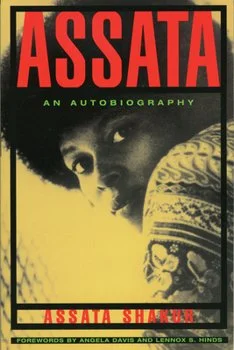
justlainguages
consulting, writing, workshops of Justin Laing
Latest Blog Posts
This is the second of the two lessons I created for the Omega Dr. Carter G. Woodson Academy on Assata Shakur (light to her spirit) as part of our class on Black nationalism. This lesson is based on Chapter 1, which includes the initial shootout with the police, being shot, arrested, and detained in the hospital. The file of images contains a jarring image of Assata Shakur hospitalized and injured. This lesson is also for ages 10-14 and can be modified.
Some years ago, for the Omega Dr. Carter G. Woodson program, organized by the Iota Phi Chapter of Omega Psi Phi Fraternity, I taught a couple of lessons on Assata Shakur as part of a course on Black nationalism. In honor of Sis Assata’s recent passing, light to her spirit, I want to share a couple of these lesson plans that people can use with in schools, out-of-school-time programs, families, or for the youth section of a larger event. The lessons include images that can be seen using the links below. I will post the second lesson next week. This lesson is based on chapter 2 of “Assata: An Autobiography” by Assata Shakur
In his 1983 book, Settlers: The Myth of the White Proletariat, J. Sakai provides excellent insight into the nature of racism, the White left, and the position of Black and other oppressed people in the U.S. To help us understand these domains, Sakai breaks down settler colonialism more broadly, including the U.S. as a settler-colonial state, White people as settlers, and the rest of us as people of oppressed nationalities within this settler-colonial state. The roots of this system lie in Europe’s parasitic and patriarchal ruling class, which, in its stunted mental state, disrupted societies’ inclination to consider the needs of the broad community, including the environment, and consistently placed its desire for power over others over societies’ long-term health and perpetuation.
Completed! This book sat on a shelf for two decades. Feels like completing Marx’s “Capital”, it’s that conceptually unrelenting, that much of a paradigm shifter/attacker. Though, i would like to talk to Dr. Ani about how the core contention that the very seed of European culture i.e. “the asili” is the embodiment of a despirtualized violence, seems undermined by a depiction of Homer as expressing a worldview prior to Plato that could have proffered another kind of Western culture, “Yurugu”, turning anthropology on its head and using it to look closely at all things Western from capitalism to imperialism to the environment and creating an African centered schematic to explain Europe, is that book. With chapters on aesthetics, religion, the image of self (Europeans) the image of others, you can look at sections of it, you can read the intro and sections.
Dr. Oyeronke Oyewumi’s 1994, “The Invention of Women: Making An African Sense of Western Gender Discourse,” is a book well worth your time and provides great insight into the nuances of European domination through her critique of the geographical origins of gender. If it doesn’t make this claim outright, “The Invention of Women” essentially argues that gender has been as important in the colonizing of the Oyo people (a people in the area today known as “Nigeria” and the people of Oyewumi) as Whiteness and, by extension, the colonizing of the African mind. Using linguistic evidence, several key interviews, and extensive reading of African and Western sources, Oyewumi explains gender as a Greco-European notion of a biologically rooted, distinct way of being in which those who are anatomically “woman” are an inferior version of the normal way of being human, which is “man.” In this way, gender is critical to the colonization of the Oyo people because it left behind a dividing hierarchy and a devastating theft of power and position of “woman.”






Dr. Ibram Kendi’s “How to Be an Antiracist” is intended to be a relatively simple and straightforward book, which is both its strength and weakness. The book begins with a number of definitions: “antiracism”: ideas, policies, and practices that counteract racist ideas, policies, and practices; and racism: ideas, policies, and practices that create or maintain disparities between races. A nuance that Kendi brings, is the important addition to the analysis of part of the reason people who appear to be of 100% European descent continue to be in a position to have an undue impact on our lives as Black people, i.e. racism, is that racism creates these disparities by expressing itself in two different forms: segregationist racism and assimilationist racism.